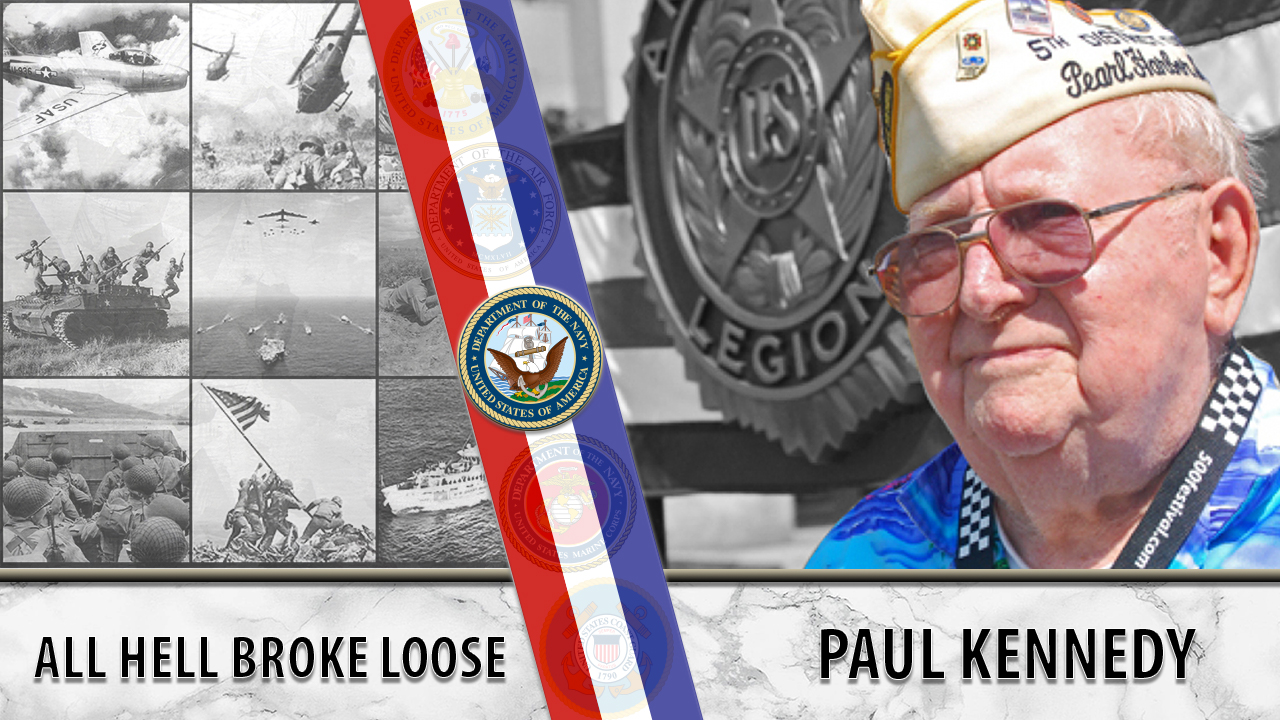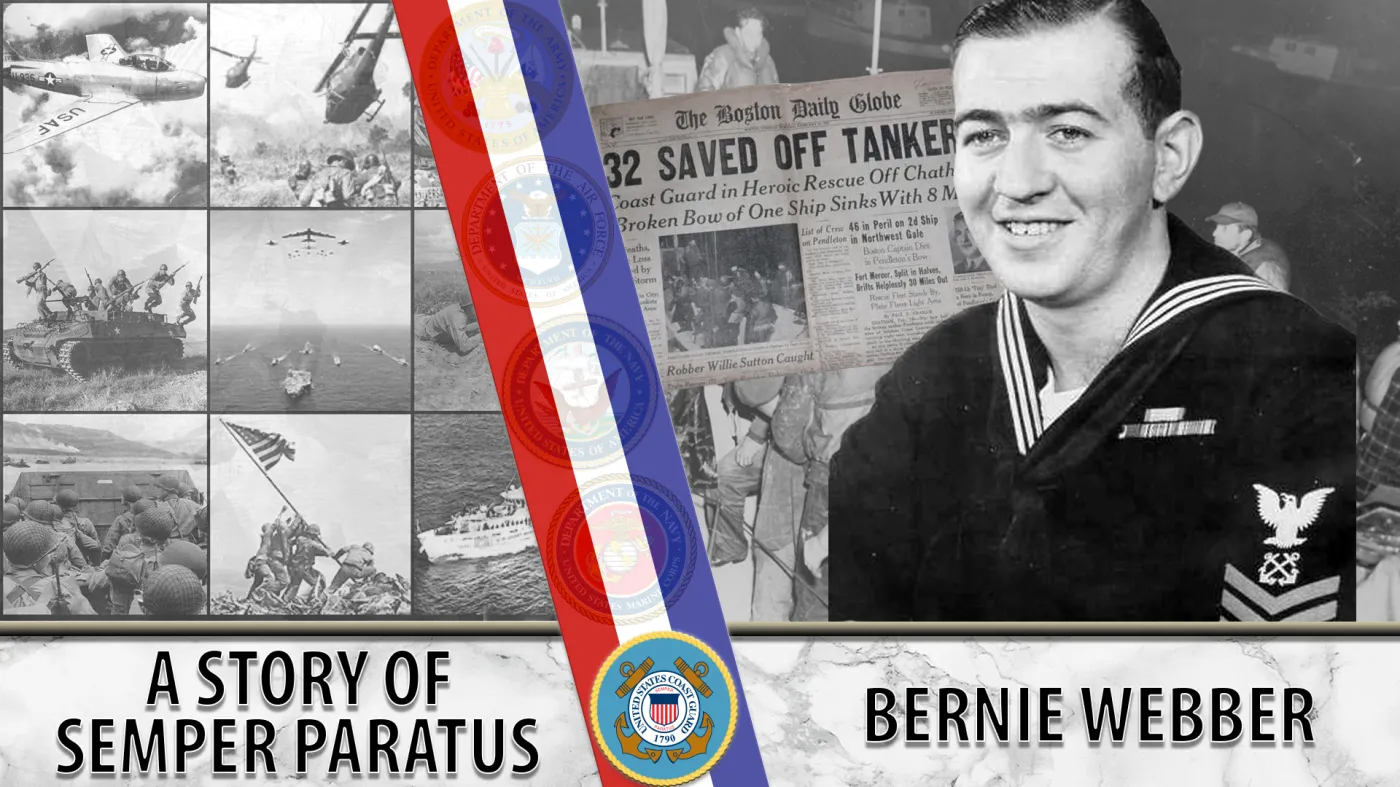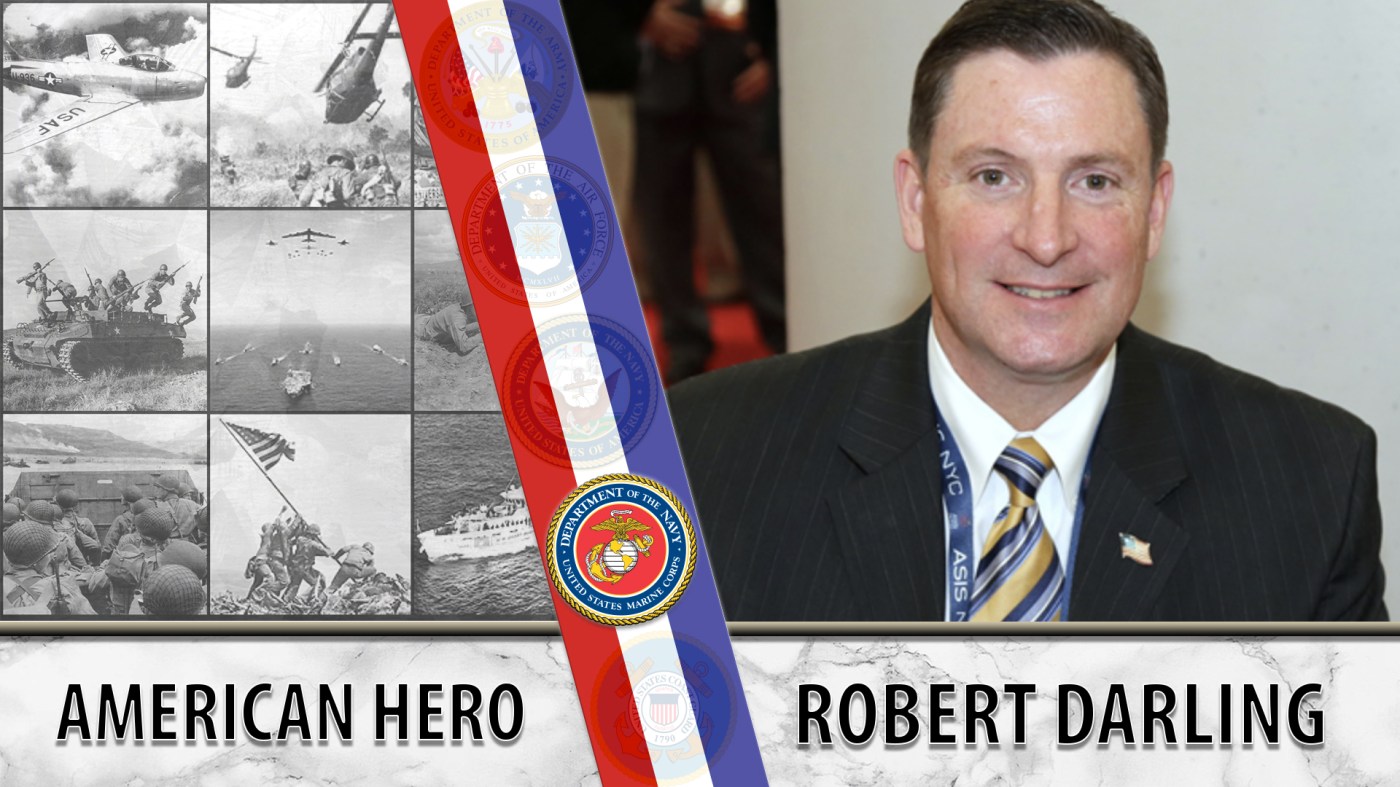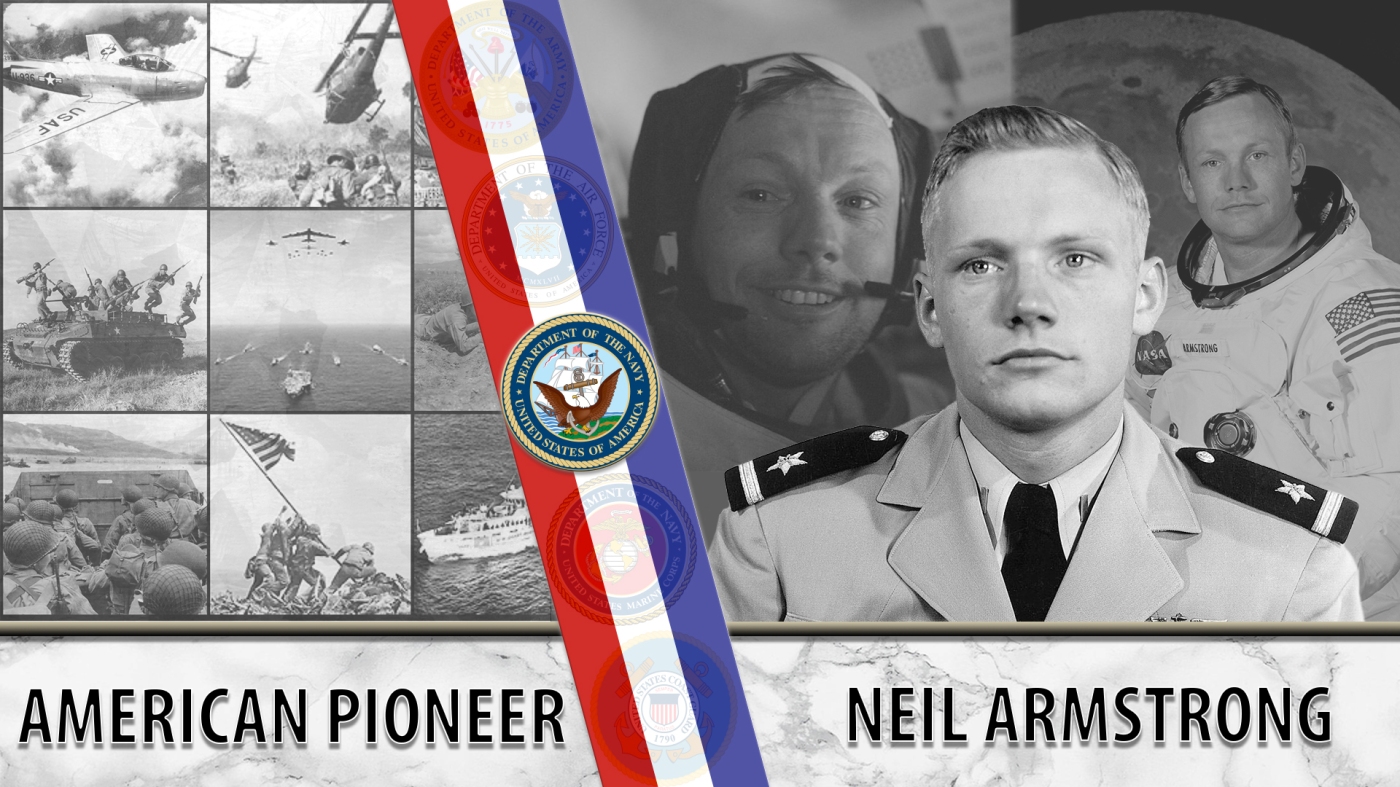
Signalman First Class Paul Kennedy was serving deck duty on the USS Sacramento in Pearl Harbor when the Japanese attacked on the morning of Dec. 7, 1941. After the bombings, Kennedy served on the USS Poole and helped escort landing craft crossing the English Channel into Normandy on D-Day.
Signalman First Class Paul Kennedy joined the Navy Reserve in 1938 and was called to active duty in November 1940. He was assigned to the USS Sacramento based in Pearl Harbor, Hawaii. On Dec. 7, 1941, Kennedy was asleep when the first wave of Japanese planes set the alarms off. He thought it was a drill, but then his friend roused him: “‘Get up and go! We’re under attack—grab your gas mask and helmet,” Kennedy said in a 2016 interview with History.com.
When he got on deck, Kennedy saw a low-flying torpedo plane. “[The pilot] was going low and slow, because he was getting ready to drop that torpedo as soon as he cleared our ship,” Kennedy said. He later learned the pilot was Mitsuo Fuchida, a captain in the Imperial Japanese Navy Air Service credited with leading the first wave of attacks at Pearl Harbor. When Fuchida’s torpedo detonated on the USS Oklahoma, Kennedy went to his station to hoist signal flags, but was prevented by the attempted bombing of the Sacramento. “[The pilot] starts strafing,” he said. “There were bullets landing all around me. I heard them… hitting and hitting, making chips on the deck. But he missed.”
Because the Sacramento was undamaged, Kennedy assisted with running cases of 50-caliber ammunition from the ship to a nearby destroyer, the USS Mugford. “All hell broke loose that morning,” he said. “I didn’t think I’d make it. Period. I didn’t think I’d live through that.” But the night after the attacks on the harbor, the mood changed when Kennedy saw an American flag from the sunken USS West Virginia sticking out of the water. “It gave us inspiration,” he said. “It told us we weren’t done yet.”
After the war
After the attacks, Kennedy was sent to Miami, Florida, to attend submarine chaser school before serving on the Submarine Chaser 713 on the U.S. East Coast for 18 months. He later transferred to the destroyer escort USS Poole, which escorted convoy ships across the North Atlantic. Kennedy served on 28 convoy missions and was wounded only once. In July 1945, he was medically discharged from the Navy. For his service during the war, Kennedy received numerous medals, including the Purple Heart, the Asiatic Pacific Campaign Medal and the WWII Victory Medal.
When the war ended, Kennedy struggled with post-traumatic stress disorder (PTSD). What helped him recover was talking with other Veterans. He joined the Indianapolis chapter of the American Legion and was an active member of the Pearl Harbor Survivors Association. “We’ve got these young guys coming in now with a monkey on their back,” Kennedy said about American Legion meetings. “I can tell them how to get rid of it. Others can, also.”
Kennedy died in August 2017. He was 96.
We honor his service.
Writer: Sarah Concepcion
Editor: Elissa Tatum
Fact Checker: Brandon Warren, Brittany Hawn
Graphics: Brandi Munoz
Topics in this story
More Stories
Bernie Webber led one of the greatest Coast Guard rescues in history that was later chronicled in the book and movie, “The Finest Hours.”
As the events of 9/11 unfolded, Marine Veteran Robert Darling served as a liaison between the Pentagon and Vice President Dick Cheney in the underground bunker at the White House.
NASA astronaut Neil Armstrong was the first person to walk on the moon. He was also a seasoned Naval aviator.






